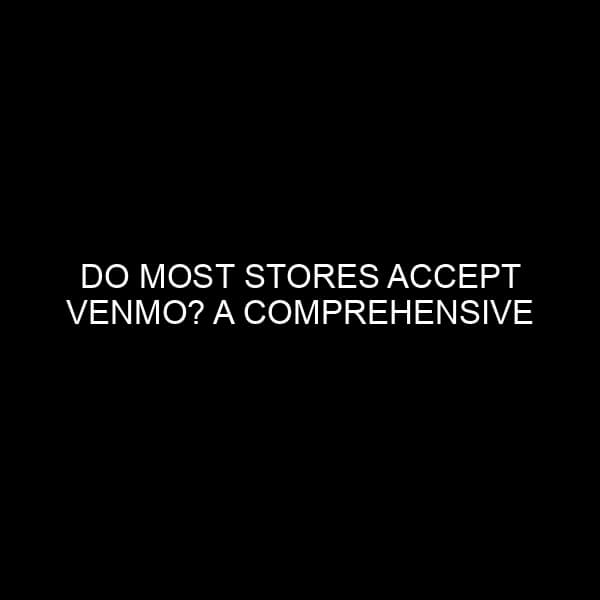Do Most Stores Accept Venmo? A Comprehensive Overview
In today’s rapidly evolving digital age, where mobile banking and peer-to-peer payment methods have become the norm, Venmo stands out as one of the most popular and widely recognized payment platforms. For anyone familiar with online banking or the nuances of the financial market, Venmo’s rapid ascent is hardly surprising. However, does this popularity translate to widespread acceptance in physical and online stores? Let’s delve deeper into the world of Venmo, examining its reach and considering whether most stores now accept it as a standard form of payment.
A Brief History of Venmo
Before understanding its acceptance, it’s pertinent to understand what Venmo is. Founded in 2009 by Andrew Kortina and Iqram Magdon-Ismail, Venmo was established as a means for friends to split expenses easily. It’s a subsidiary of PayPal, a global leader in digital payments. Venmo provides a social twist to the payment platform, allowing users to share their transactions (sans the amount) with a feed, akin to social media platforms.
Venmo’s Expansion Into Retail
In the initial stages, Venmo was primarily used for peer-to-peer (P2P) transactions. However, as its user base expanded, so did its functionalities. By 2018, Venmo began allowing users to make payments at selected retailers. This change heralded a significant shift, indicating the platform’s intention to branch out from just P2P transactions.
1. Physical Retailers
As of my last update in 2021, not all physical retailers accept Venmo. Those that do often utilize a QR code system. Shoppers can scan this QR code with their Venmo app to complete a transaction. This mode of payment is contactless, fast, and quite efficient, making it an attractive option, especially considering the social distancing norms that have become essential in recent years.
However, this does not imply that every store on your street would accept Venmo. Large chains with advanced POS (Point-of-Sale) systems might be more equipped to handle such transactions compared to small mom-and-pop stores.
2. Online Retailers
Online shopping platforms have been more receptive to integrating Venmo. Many e-commerce websites have begun offering Venmo as a payment option, especially those that already have PayPal integrated. Since Venmo is a part of the PayPal family, the integration process for merchants is relatively seamless.
Challenges and Concerns
It’s essential to understand why some stores, both online and physical, might be hesitant to accept Venmo.
1. Transaction Fees
For every purchase made through Venmo, retailers have to bear a transaction fee. While this is common for many payment methods, some retailers might prefer to avoid these additional costs.
2. Security Concerns
Security is paramount in the financial and banking industry. Despite Venmo’s robust security measures, concerns about digital payment platforms being susceptible to hacking and fraud deter some businesses.
3. Adoption Rate Among Older Demographics
While the younger demographic has rapidly embraced Venmo, older populations might not be as familiar with or trustful of the platform. As a result, stores catering predominantly to this demographic may not see the value in integrating Venmo.
The Future of Venmo in Retail
The trajectory of Venmo’s integration into the retail space looks promising. As more users adopt the platform, the demand for its acceptance in stores will increase.
1. Partnership and Collaborations
Venmo is continually partnering with brands and businesses, expanding its reach. Such partnerships often result in promotional offers, incentivizing users to pay via Venmo.
2. Enhanced Features
Venmo is not just resting on its laurels. They’re always adding features, from business profiles to a Venmo credit card, ensuring that they remain at the forefront of digital payment solutions.
Conclusion
In conclusion, while Venmo’s acceptance has seen considerable growth in the past few years, it’s not universally accepted in every store. However, its trajectory indicates that this could change in the near future. As always, the adoption of new technologies and platforms hinges on demand, security, and the perceived value they bring to both customers and businesses. For now, it’s safe to say that while many stores do accept Venmo, we’re still a way off from universal acceptance.






